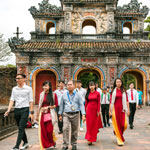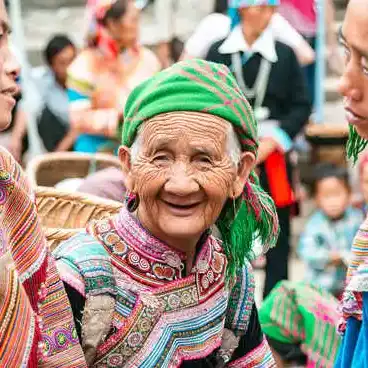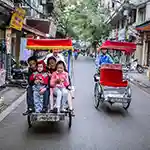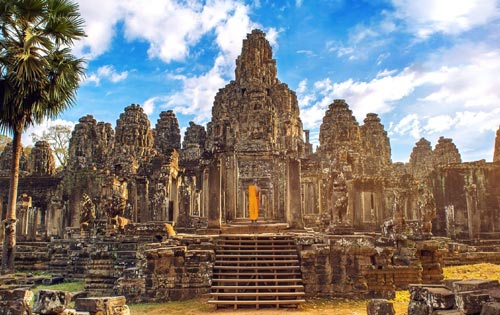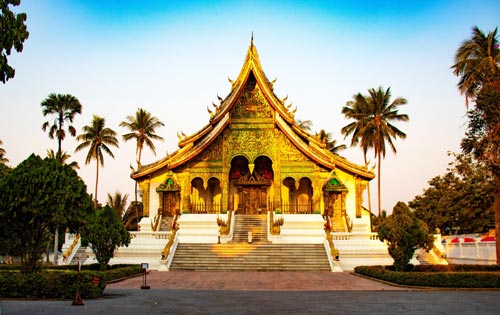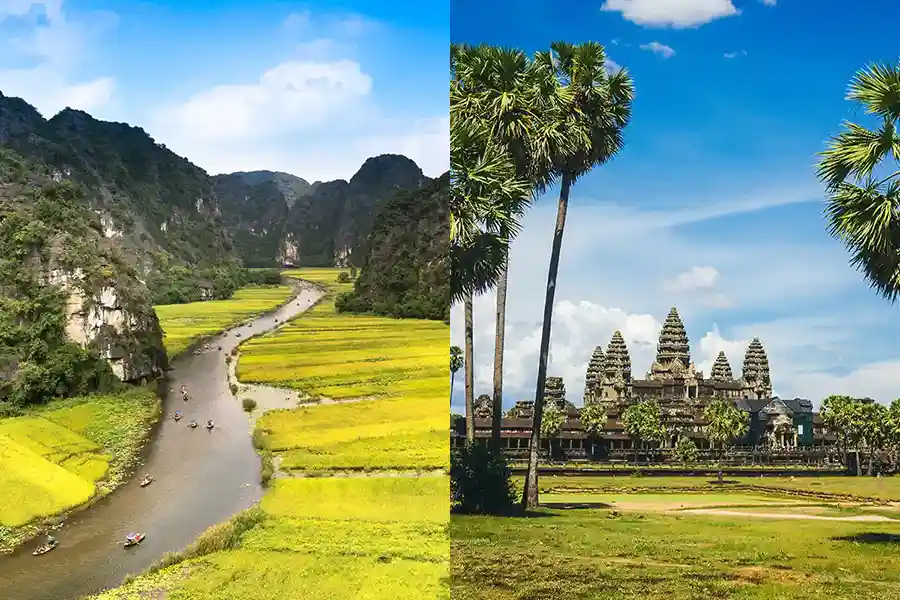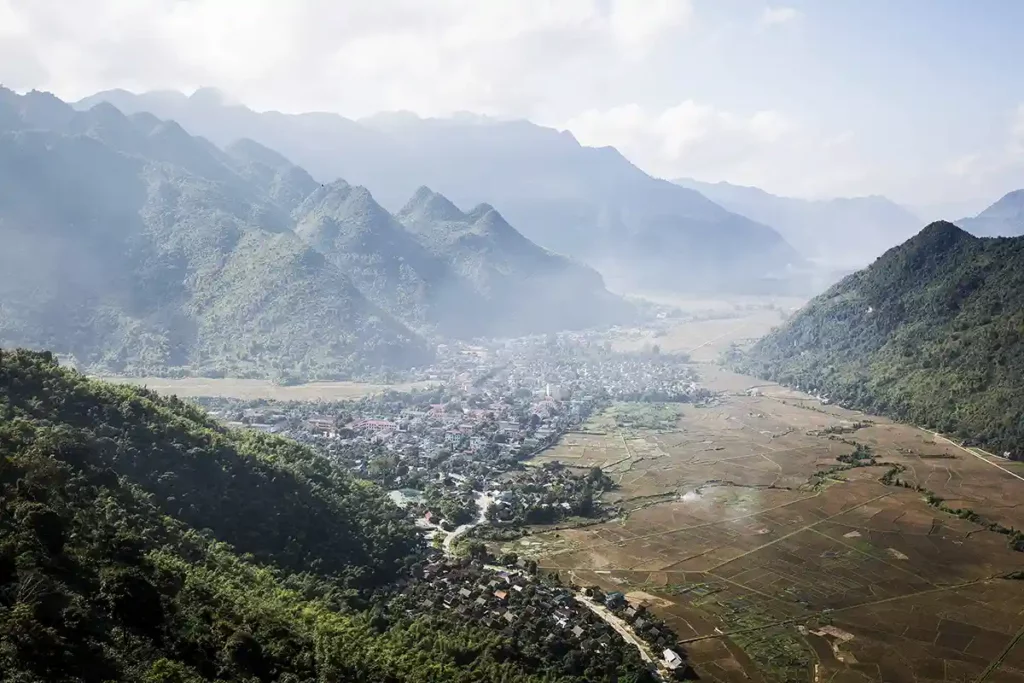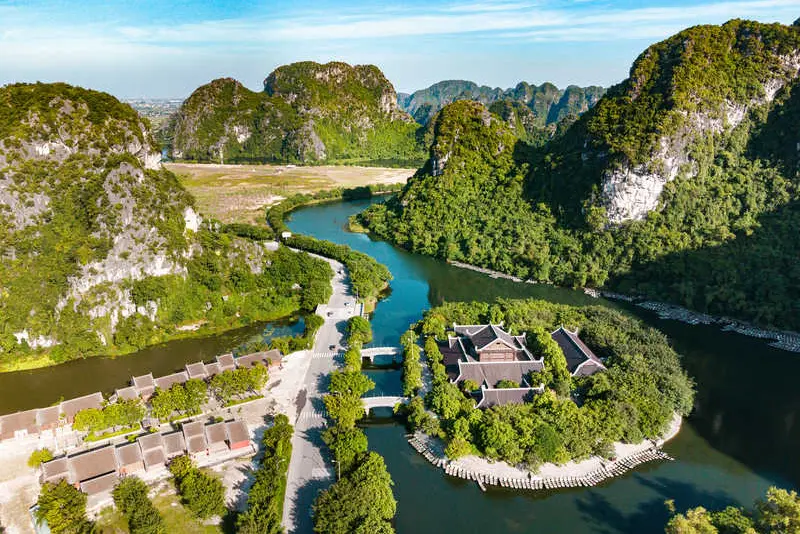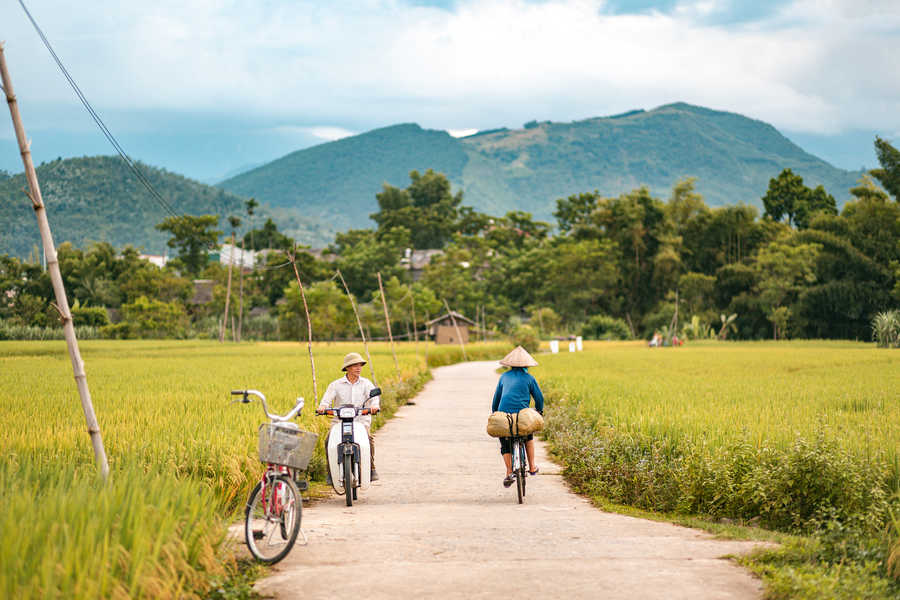Hanoi, the capital of Vietnam, is the cultural heart of the country. Its picturesque alleys, historic landmarks, and vibrant atmosphere blend together to create an iconic place for exploration. In this article, discover the must-see attractions to visit during your stay in Hanoi.
Contact us to organize a safe and seamless trip to Vietnam.
Hanoi’s History and Culture
Hanoi is much more than just a city—it is the beating heart of Vietnam’s history. Traces of the past can be found in places such as the Ho Chi Minh Mausoleum and the Temple of Literature, bearing witness to the country’s rich heritage. The city’s vibrant culture, colorful festivals, and the warm hospitality of its people reflect the vitality of this historic capital. Every corner of Hanoi tells a story, every moment brings you closer to the soul of Vietnam, creating an unforgettable experience that reveals the deep layers of local culture.
Let’s explore together the must-see places during your stay in Hanoi.
Hanoi’s Old Quarter: A Journey Into History
The Captivating History of Hanoi’s Old Quarter
Hanoi’s Old Quarter is located in the northeast of the capital and belongs to the Hoan Kiem District. The location of the old town was strategically chosen—between the Imperial Citadel and the Red River—an area considered advantageous for commercial development.
The history of the Old Quarter dates back to the 11th century, when King Ly Thai To decided to move the capital from Hoa Lu (Ninh Binh) to Hanoi. From the 13th century onward, Hanoi began attracting craftsmen from surrounding regions, who soon organized themselves into craft cooperatives and guilds. From that moment, the inhabitants of each village gathered and worked in the same street, giving each street a distinctive uniform character that can still be seen today.
The 36 Streets and Colonial Houses
The streets of the Old Quarter are steeped in ancient memory. The narrow houses with their yellow façades, weathered by time, bear witness to an era when traditional Vietnamese architecture intertwined harmoniously with the French colonial heritage. Wandering through these picturesque alleys, beneath the tangle of electric wires, captivates and immerses you in the very soul of Hanoi.
All you need is a map of downtown Hanoi, and you’re ready to explore the Old Quarter! A large number of libraries, bookstores, and art galleries are located just a few steps from Hoan Kiem Lake, making it easy to find one.
We recommend using the large fountain on Dong Kinh Nghia Thuc Square, near Hoan Kiem Lake, as your landmark. From there, you can venture deep into the maze of alleys and streets and immerse yourself in the intense traffic that is unique to Hanoi. Along the way, you’ll spot old houses, remnants of the glorious days when this area was the most active and prosperous commercial hub in Vietnam.
Here are a few streets (and their specialties) worth exploring:
Ta Hien: cafés, beer, and street food – a lively spot on weekends during good weather!
Hang Gai: silk and tailor-made clothing
Hang Ma: traditional votive papers, now taking on the colors of every major celebration (Vietnamese New Year, Mid-Autumn Festival, but also Christmas and even Halloween!)
Hang Bac: silver shops, jewelry, and all kinds of accessories
Hang Duong: sugar shops, candies, and O mai (sweet and spiced dried fruits)
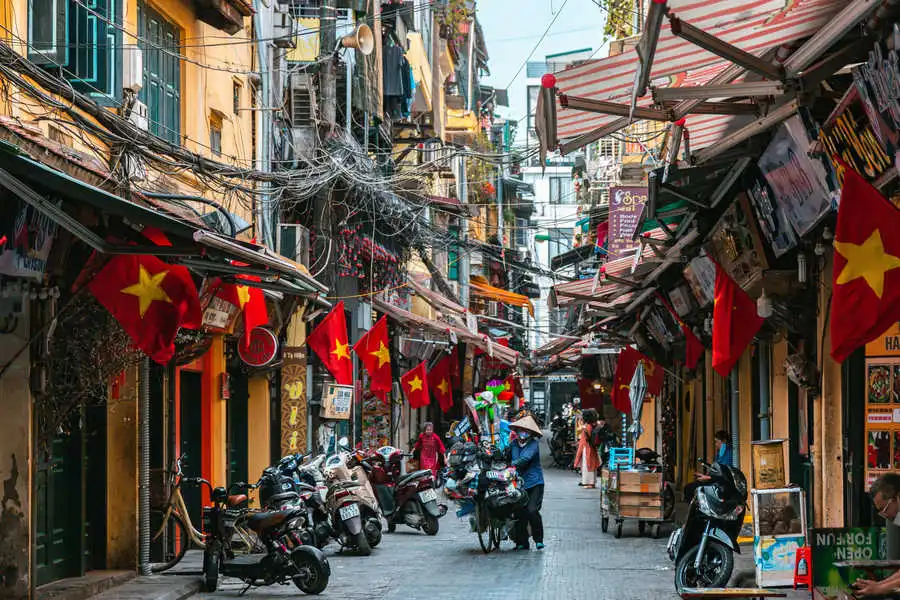
Ta Hien street. Photo : Mathieu Arnaudet
Dong Xuan market
The vibrant and bustling Dong Xuan Market stands as the nerve center of commerce in the Old Quarter. Spread across several floors, the market brims with everything from traditional clothing to modern gadgets. Stalls overflow with local treasures, exotic spices, and fine handicrafts, offering a unique window into the lively daily life of Hanoi’s residents.
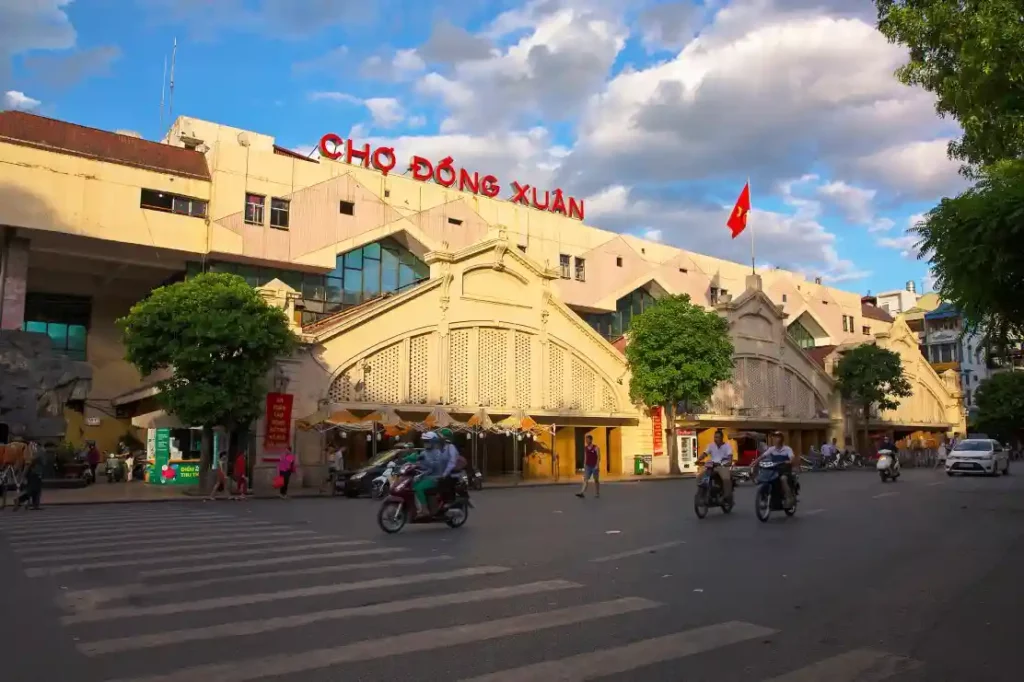
Dong Xuan market, Hanoi, Vietnam. Crédit : Mathieu Arnaudet
Every corner of the Old Quarter weaves together Hanoi’s rich and complex story, where age-old traditions blend seamlessly with the vibrant rhythm of contemporary life. Strolling through this iconic neighborhood takes you to the heart of the past while keeping you connected to the city’s lively present.
Lac Hoan Kiem et le Pont du Lever du Soleil
Legends Surrounding Hoan Kiem Lake
Hoan Kiem Lake, also known as the “Lake of the Returned Sword,” is shrouded in enchanting legends that capture the imagination of visitors. According to the most famous tale, Emperor Lê Lợi was given a magical sword by a celestial turtle to help him drive out Chinese invaders. After his victory, the turtle asked the emperor to return the sword to the lake, thus giving birth to the story of Hoan Kiem Lake and its mystical charm.
Walking Across the Sunbeam Bridge
The Sunbeam Bridge, also known as Cầu Thê Húc, is a picturesque walkway connecting Hoan Kiem Lake to Jade Island. A morning stroll across this bridge offers a remarkable experience as the sun gently rises, bathing the lake in golden light. The panoramic view of the lake, with Ngoc Son Temple as its backdrop, creates a memorable image that captures the serene beauty of Hanoi.
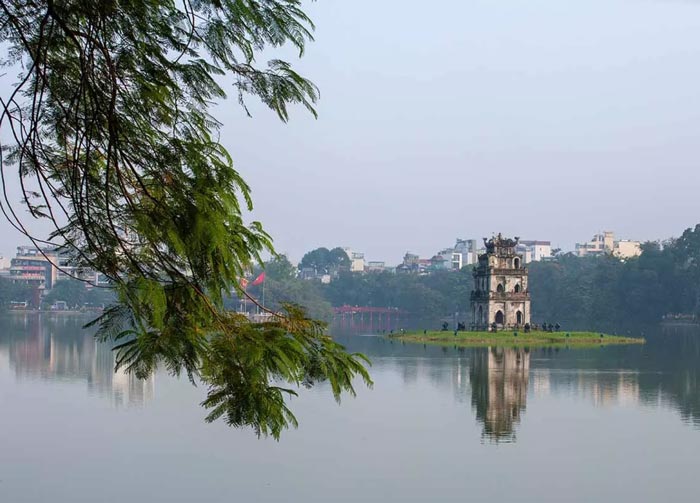
Ngoc Son Temple on Jade Island
Accessible via the Thue Huc Bridge, Ngoc Son Temple sits majestically on Jade Island, in the heart of Hoan Kiem Lake. Dedicated to General Tran Hung Dao, who played a crucial role in defending the country against Mongol invaders, the temple is a captivating example of Vietnamese architecture. The fragrance of incense and the sacred atmosphere create a serene space where visitors can reflect and connect with the spirituality of Vietnam.
Hoan Kiem Lake and the Sunbeam Bridge are more than just a scenic landscape—they are places imbued with mystery and symbolism, evoking Vietnam’s ancient tales. Walking along the lake’s shores, visiting the sacred temple, and watching the sunrise from the bridge immerse you in an experience that blends nature, spirituality, and history, creating unforgettable memories of your journey to Hanoi.
Thang Long Water Puppet Show
An Ancient Vietnamese Artistic Tradition
The Thang Long Water Puppet Show immerses audiences in an artistic tradition that dates back centuries. Originating in the flooded rice paddies of northern Vietnam, this captivating form of art is deeply rooted in local beliefs and customs. Passed down from generation to generation, water puppetry has become a true cultural treasure, embodying both the creative spirit and the profound connection between the Vietnamese people and water.
A Mesmerizing Performance on Water
Attend a water puppet show and you will be amazed by the magic that unfolds on stage. Skilled puppeteers manipulate brightly colored figures that seem to glide gracefully across the water, bringing to life folklore and historical tales. The synchronized movements of the puppets, accompanied by traditional music and singing, create an enchanting experience that transports audiences into a world of legends and stories.
Behind the Scenes with the Artists
For an even richer experience, explore the backstage of the Thang Long Theater to discover the meticulous work behind every performance. Meet the passionate artists who dedicate their lives to preserving this extraordinary tradition. You’ll have the opportunity to learn more about the puppetry techniques, the elaborate costumes, and the stories brought to life on stage. This behind-the-scenes immersion adds a deeper dimension to your understanding of the art of water puppetry.
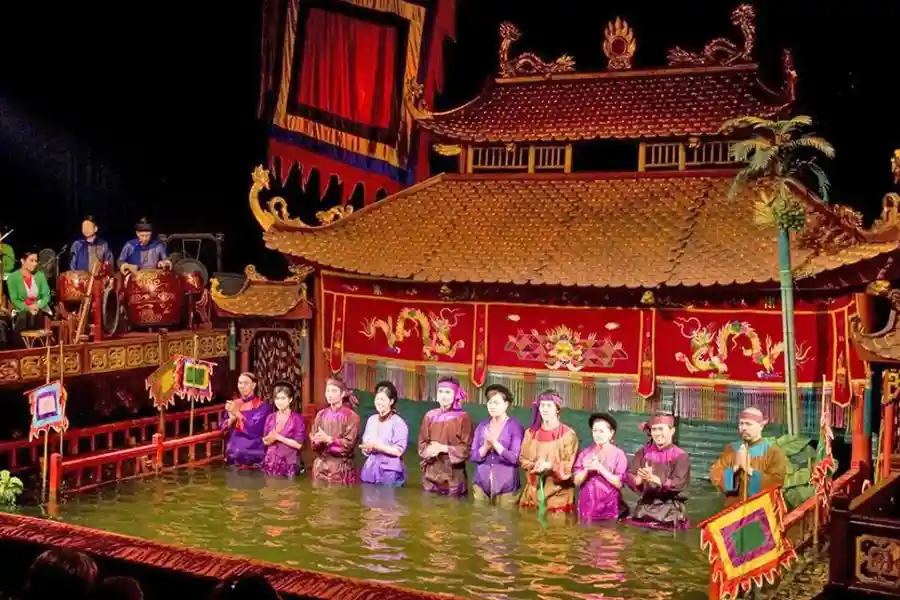
En assistant à un spectacle de marionnettes sur l’eau Thang Long, vous plongez non seulement dans une forme artistique unique, mais vous vous connectez également à l’héritage culturel vivant du Vietnam. C’est une expérience qui transcende le temps et les frontières, vous permettant de ressentir l’émotion et la créativité qui ont défini le pays depuis des siècles.
Ho Chi Minh Mausoleum and Memorial Complex
A Tribute to Vietnam’s Revolutionary Leader
The Ho Chi Minh Mausoleum stands as a powerful symbol of the deep respect the Vietnamese people hold for their revolutionary leader, Ho Chi Minh. Built to house his preserved body, this sacred sanctuary reflects the enduring legacy of the man who guided Vietnam toward independence. Visitors from across the country and around the world come here to pay their respects, creating an atmosphere of reverence and gratitude.
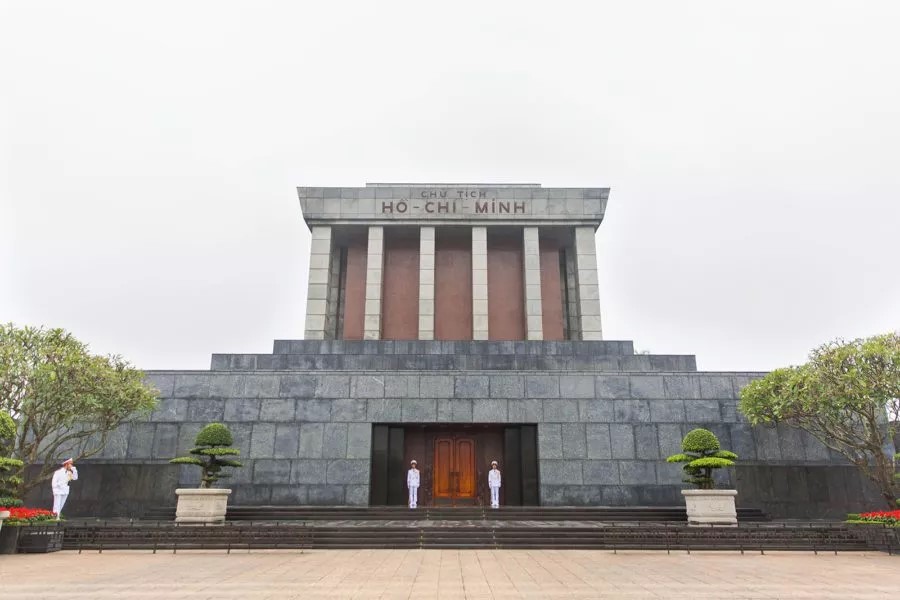
Unique Architecture and Cultural Symbols
The architecture of the Ho Chi Minh Mausoleum blends Vietnamese and Soviet styles, reflecting both revolutionary ideals and cultural fusion. Its clean lines and austere design echo Ho Chi Minh’s humility, while still conveying an impressive sense of grandeur. The surrounding cultural symbols, such as the stilt house and the Lotus Pagoda, add a spiritual dimension to this historic site.
Gardens and Buildings of the Memorial Complex
The Memorial Complex extends beyond the Mausoleum, encompassing lush gardens and significant buildings. The peaceful gardens provide a retreat from the bustle of the city, offering a place for reflection on Ho Chi Minh’s legacy and his impact on modern Vietnam. Nearby buildings, such as the Presidential Palace and the Stilt House, shed light on the life and ideals of the revolutionary leader.
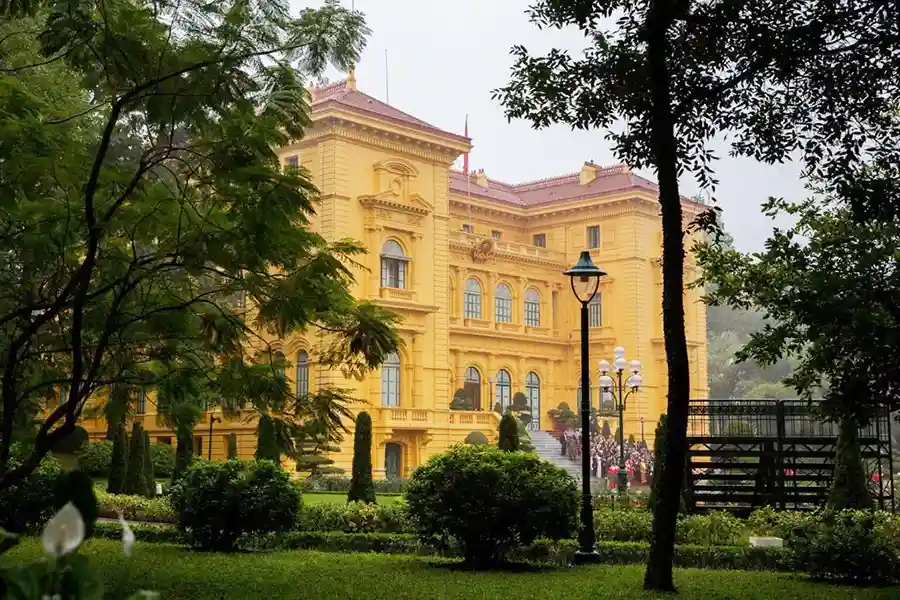
Exploring the Ho Chi Minh Mausoleum and Memorial Complex immerses visitors in Vietnam’s fascinating history and reveals the deep attachment of the people to their leader. This sacred site embodies the very essence of the Vietnamese determination for independence and offers an opportunity to reflect on the values and sacrifices that shaped the nation as it is today.
One Pillar Pagoda: Elegance and Spirituality
Unique Lotus-Shaped Architecture
The One Pillar Pagoda, or Chùa Một Cột in Vietnamese, is an architectural marvel that fascinates with its distinctive lotus-shaped design. Built in the 11th century, this pagoda is a dazzling example of Vietnamese ingenuity and craftsmanship. Its elegant structure, supported by a single stone pillar, appears to float above a pond, creating an image that is both majestic and delicate.
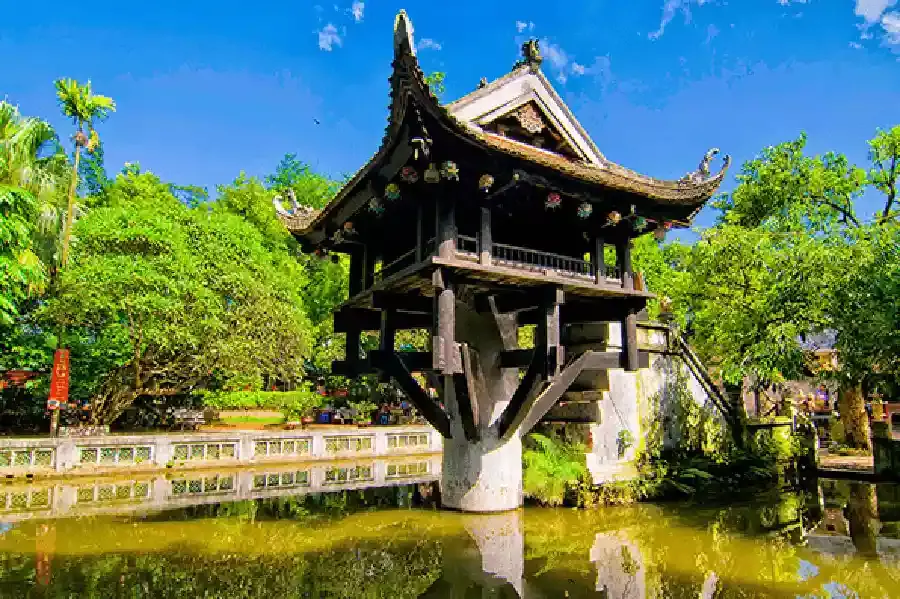
Spiritual and Religious Significance
The One Pillar Pagoda holds deep spiritual and religious meaning for the Vietnamese people. It is dedicated to the goddess Quan Yin, a symbol of compassion and kindness. Visitors flock to this sacred site to place offerings and light incense sticks, seeking blessings and spiritual comfort. A sense of devotion and reverence envelops you as soon as you step through the pagoda’s gates.
Guided Tour of the Pagoda and Its Surroundings
On a guided tour of the One Pillar Pagoda, you will delve into the fascinating history of this iconic monument. Your guide will reveal architectural details and explain the customs and beliefs associated with the site. You will have the opportunity to admire delicate carvings, elegant frescoes, and ancient inscriptions that adorn the pagoda. Exploring the surrounding area, you will also discover peaceful gardens and sacred buildings that will enrich your understanding of Vietnamese spirituality.
Temple of Literature: Guardian of Knowledge
Vietnam’s First University
Built in 1070, the Temple of Literature stands as a historic and educational beacon for Vietnam. As the country’s first university, it was dedicated to the teaching of philosophy, literature, and the arts. Walking through its courtyards means treading the same stones once walked by generations of eager scholars, a powerful reminder of the centuries-old importance of education in Vietnamese culture.
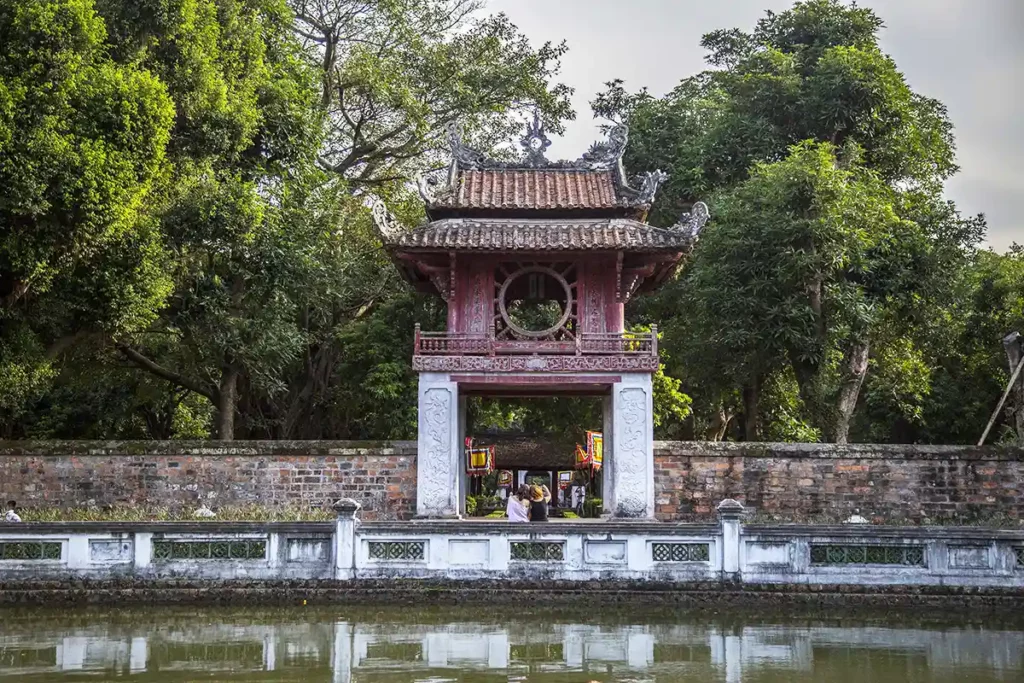
Traditional Vietnamese Architecture and Peaceful Gardens
The architecture of the Temple of Literature embodies the elegance and aesthetics of traditional Vietnamese art. Sloping roofs, richly carved gates, and tranquil courtyards showcase the meticulous attention to detail. Quiet gardens adorned with stone ponds and sculptures create a serene atmosphere, ideal for meditation and reflection.
Promoting a Culture of Education and Learning
Beyond its historical role, the Temple of Literature continues to promote a culture of education. Stone steles engraved with the names of graduates reflect Vietnam’s pride in scholarship. Ceremonies are still held here to honor outstanding students, perpetuating the importance of knowledge in Vietnamese society.
Visiting the Temple of Literature means stepping into a sanctuary of knowledge, where Vietnam’s educational heritage is celebrated and preserved. It is a place where past and present converge, reminding us that education is the foundation of a prosperous nation, and that the thirst for knowledge is a precious legacy to pass on to future generations.
Railway Discovery in Hanoi: Train Street and Long Bien Bridge
Train Street and Its Cafés
Immerse yourself in the heart of Hanoi’s daily life by visiting Train Street, where the railway quite literally runs through urban life. Picture yourself just a few steps from the tracks, watching trains pass only centimeters away, while residents go about their routines nearby. This remarkable scene offers a captivating glimpse into the city’s energy and dynamic rhythm.
The charming cafés lining the tracks invite you to mingle with locals, share laughter, and engage in warm conversations. It’s a unique opportunity to meet residents, discover their everyday life, and experience authentic Vietnamese hospitality.
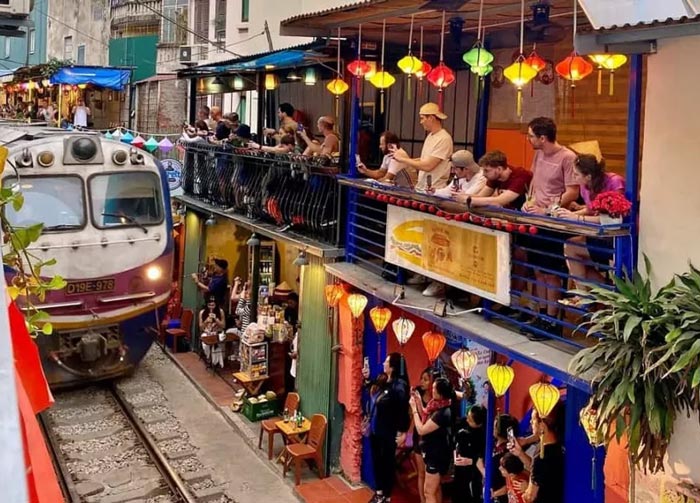
Crossing Long Bien Bridge: A Historical and Cultural Landmark
Long Bien Bridge, a historic icon of Hanoi, is much more than just a crossing over the Red River. Built during the French colonial period, this emblematic bridge has witnessed Vietnam’s tumultuous history. Walking along its railway tracks, you follow in the footsteps of past generations and feel the timeless connection between past and present. The breathtaking views it offers of the river and the city provide a captivating glimpse into Hanoi’s dual identity, where ancient traditions and modernity intertwine in harmony.
Our tip: Admire the bridge from the terrace of Café Serein.
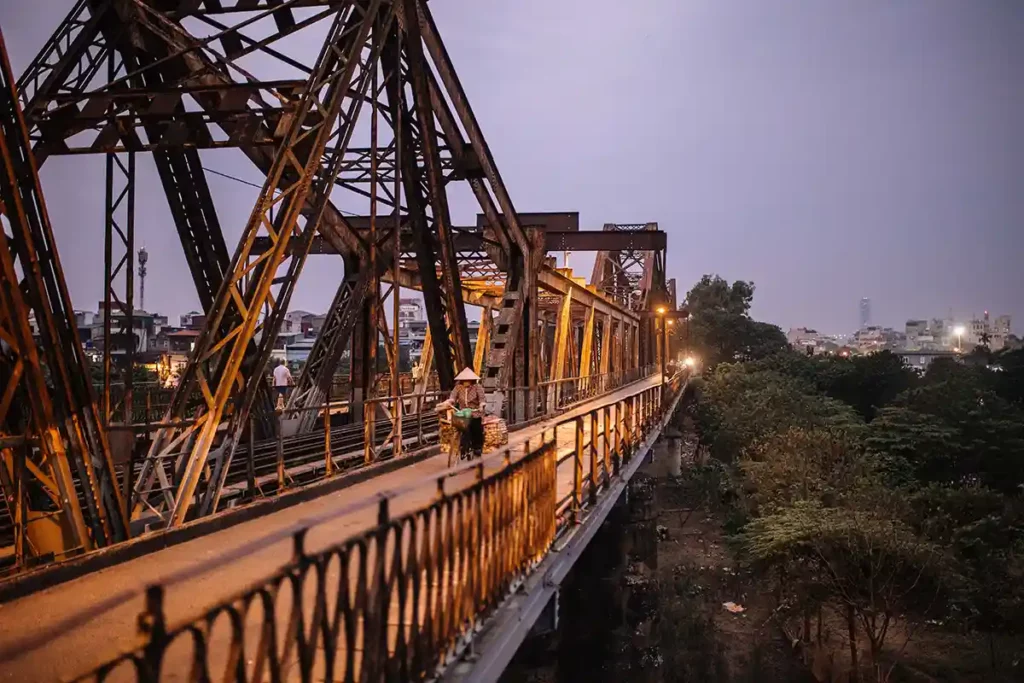
Immersing yourself in Hanoi’s daily life—whether it’s along Train Street with its cafés by the railway or while crossing Long Bien Bridge—is an invitation to understand the true soul of the city. These experiences allow you to connect with the locals, feel the pulse of urban life, and contemplate Vietnam’s living history. It is these authentic moments that make a trip to Hanoi such a memorable and enriching adventure.
Culinary Exploration in Local Markets
Hanoi Night Market
The Hanoi Night Market is a feast of flavors, colors, and aromas that awakens all your senses. As night falls, the stalls come alive, offering an incredible variety of local dishes and products. The alleys glow with lights, while the background music adds a festive touch to the lively atmosphere. It’s a true visual and culinary delight where you can discover Vietnamese cuisine at its very best.
Tasting Authentic Vietnamese Street Food
The street food stalls at the market invite you to dive into the delectable world of Vietnamese cuisine. From steaming bowls of pho to crispy banh mi sandwiches and delicious grilled skewers, every corner of the market offers a new opportunity to sample Vietnam’s authentic delights. Bold flavors and combinations of fresh ingredients create an unforgettable culinary experience that will amaze your taste buds.
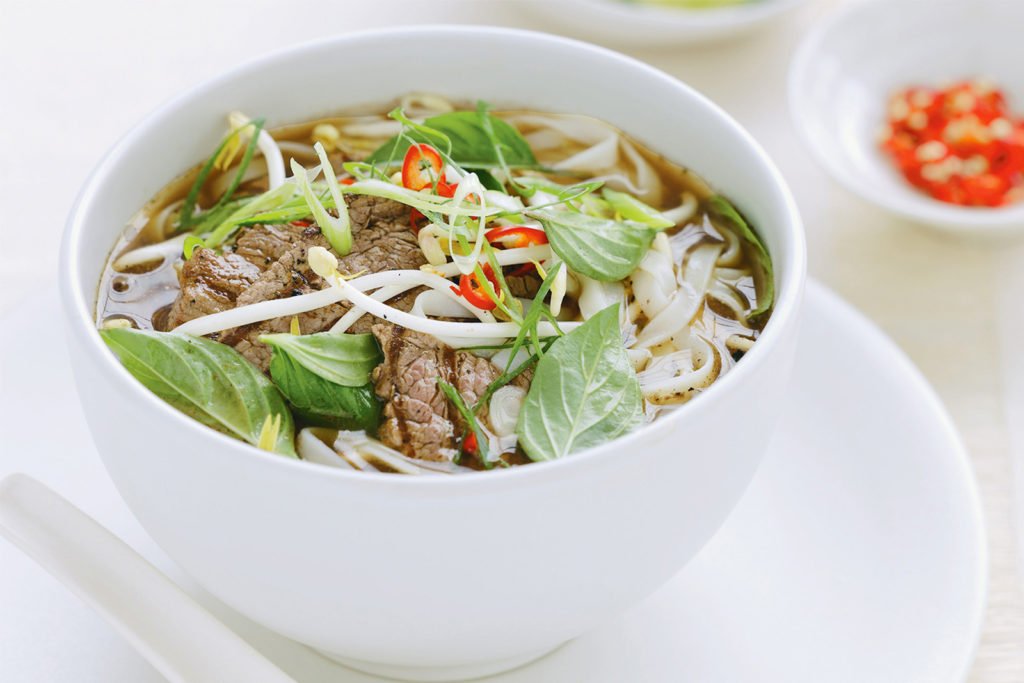
Meeting the Local Vendors
Exploring local markets is also a unique opportunity to meet the passionate vendors who bring their crafts and products to life. Talking with the merchants will give you a better understanding of the traditional methods used to prepare dishes and the importance of fresh ingredients in Vietnamese cuisine. You may even have the chance to learn a few cooking tips directly from local experts.
By venturing into Hanoi’s local markets, you dive into the very soul of Vietnamese cuisine and discover the vibrancy of the city’s food culture. Every bite brings you closer to ancestral traditions and offers an authentic glimpse into the daily lives of the locals. A culinary exploration is much more than just a meal—it is a sensory and cultural experience that will leave you with lasting flavors and memories.
Vietnam Museum of Ethnology: Discovering Cultural Diversity
Comprehensive Collection of Cultural and Ethnic Artifacts
Let’s end this list with a museum located slightly outside the city center, but one you shouldn’t miss. The Vietnam Museum of Ethnology offers a fascinating immersion into the richness and diversity of the cultures that make up the country. Its comprehensive collection of cultural and ethnic artifacts, carefully curated, reflects the many ethnic groups living in Vietnam. From traditional costumes to musical instruments and ritual objects, each item tells a unique story and provides a deeply captivating insight into the daily life and beliefs of these communities.
Interactive and Educational Exhibitions
The interactive exhibitions of the Vietnam Museum of Ethnology captivate visitors of all ages. Lifelike dioramas, faithful reconstructions, and multimedia presentations allow guests to literally step into the lifestyle of Vietnam’s ethnic groups. Educational activities enhance learning by offering hands-on experiences that directly connect you with the traditions and customs of these communities. You’ll also find reproductions of traditional houses in the museum gardens.
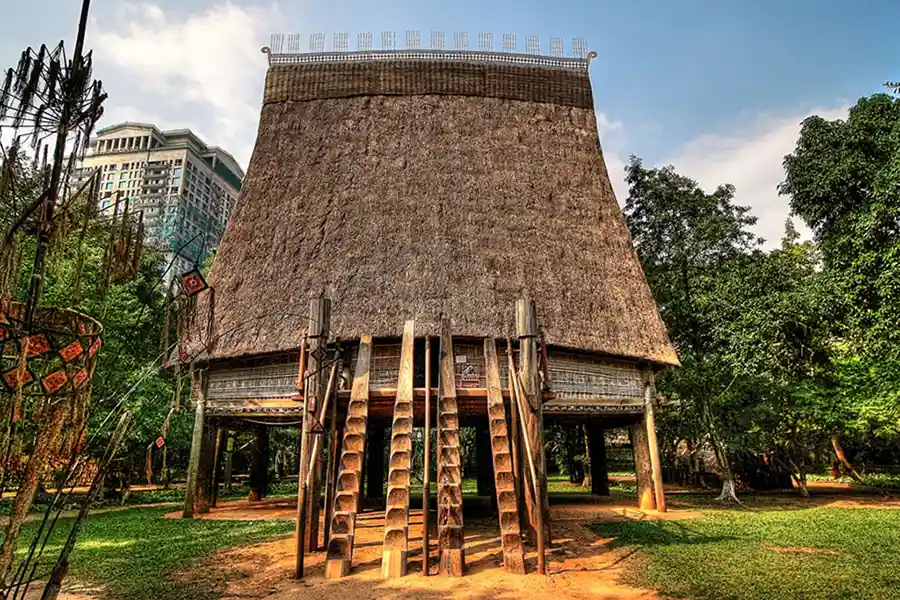
Reconstitution maison traditionnelle, Musée ethnologie de Hanoi
Understanding the Traditions and Customs of Ethnic Groups
The Vietnam Museum of Ethnology takes you on a journey through the country’s mountainous highlands, coastal regions, and vast plains, where you can discover the unique lifestyles of different areas. You will gain a deeper understanding of the traditional crafts, festive celebrations, belief systems, and agricultural methods that have shaped these communities over the centuries. This in-depth immersion offers profound appreciation of the cultural richness and diversity that define Vietnam.
By exploring the Vietnam Museum of Ethnology, you open a window onto the many facets of the country and its people. You will leave the museum with an enriched understanding of the complexity and depth of Vietnamese culture, along with a new appreciation for the different forms of expression and ways of life that make Vietnam a unique cultural kaleidoscope. We recommend visiting it before heading to the northern mountains, where you will encounter some of these ethnic groups in person.
As we journeyed through this article, we discovered a captivating range of sites and experiences that make Hanoi an unforgettable destination. From the elegant architecture of the Temple of Literature to the sensory immersion of the local markets, the enchantment of the water puppet shows, and the exploration of daily life along the railway, each step of our journey brought us closer to the rich culture and vibrant history of Vietnam’s capital.
Hanoi is far more than just a travel destination; it is a dive into the past and a deep immersion in Vietnam’s contemporary life. Every street, monument, and interaction offers a window into the country’s customs, traditions, and values. Exploring its hidden corners, architectural treasures, and culinary delights creates an enriching experience that transforms every traveler into a curious explorer.
If you dream of delving into the soul of Southeast Asia, Hanoi is the perfect place to begin your adventure. The must-see attractions we’ve explored here are only the start of a broader and deeper journey into this captivating city. By planning your trip to Hanoi with us, you’ll have the opportunity to create lasting memories, broaden your cultural horizons, and connect with a dynamic and welcoming community.
Whether you are fascinated by ancient history, eager to taste new flavors, or looking for authentic encounters with locals, Hanoi offers an endless array of possibilities. So get ready to explore this fascinating city, to let yourself be immersed in its beauty, and to experience an adventure that will leave an indelible mark on your heart and mind.
Feel free to contact us to help plan your tour of Hanoi and its surroundings.


